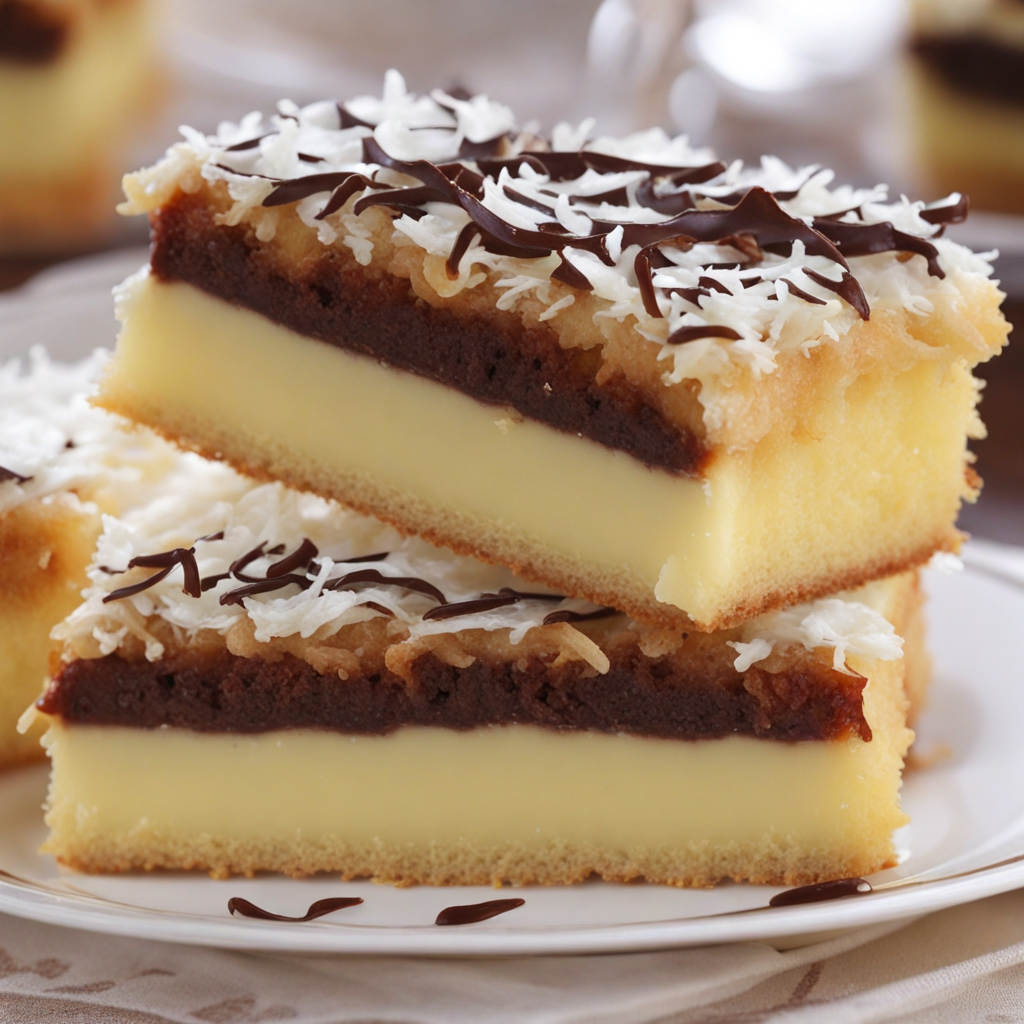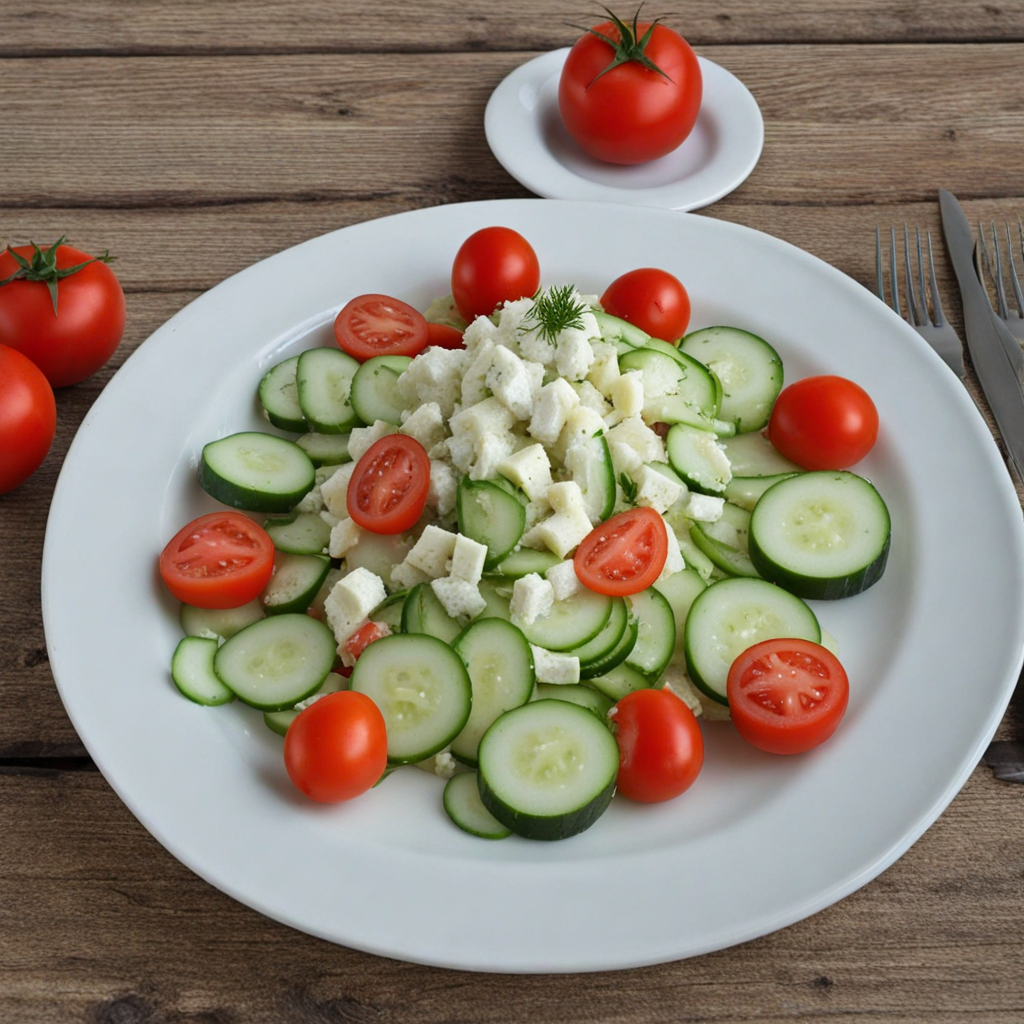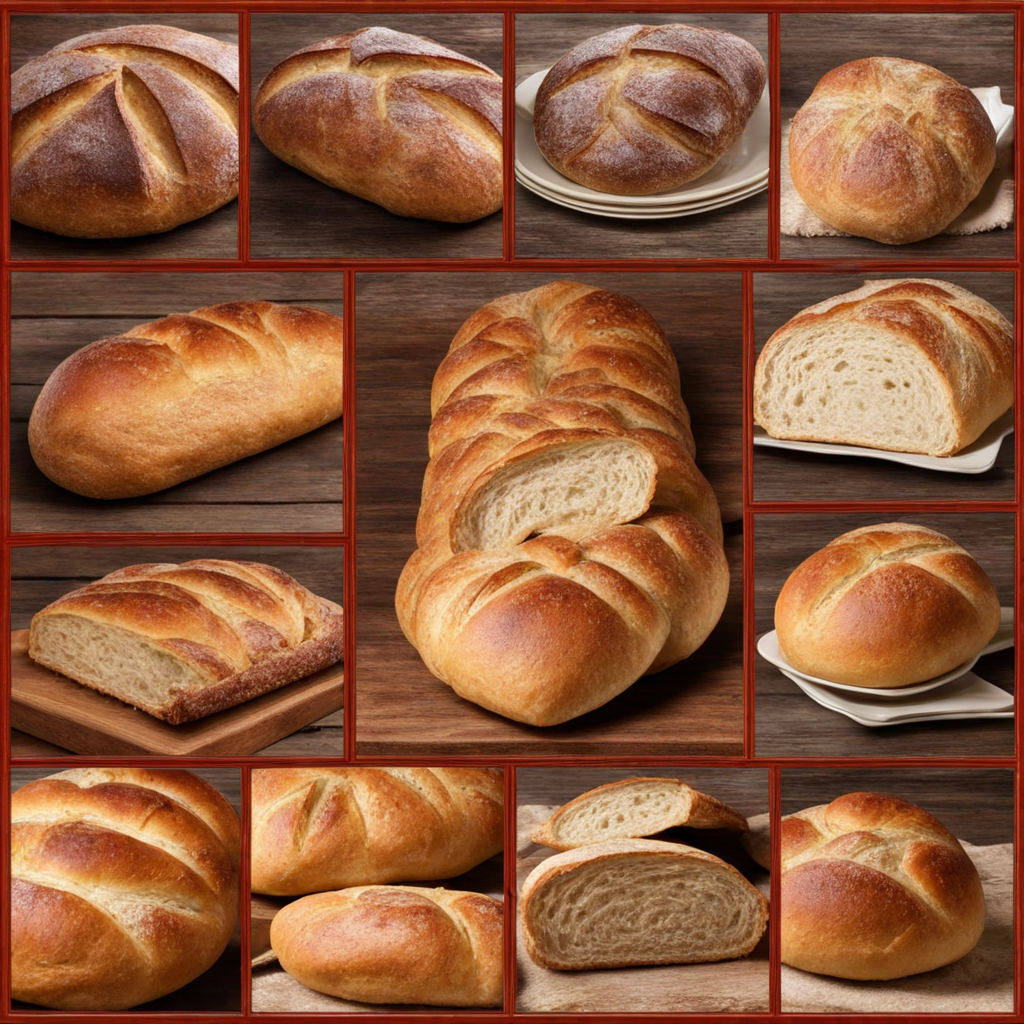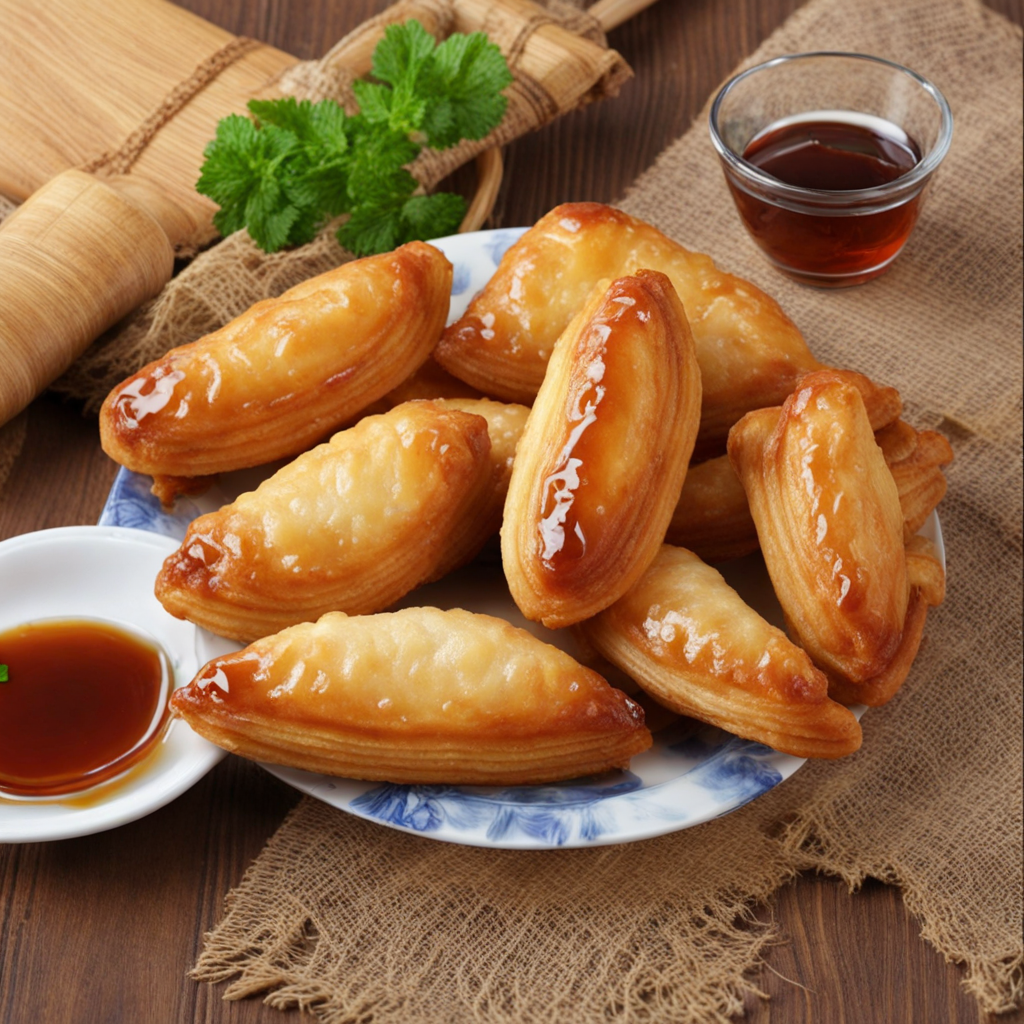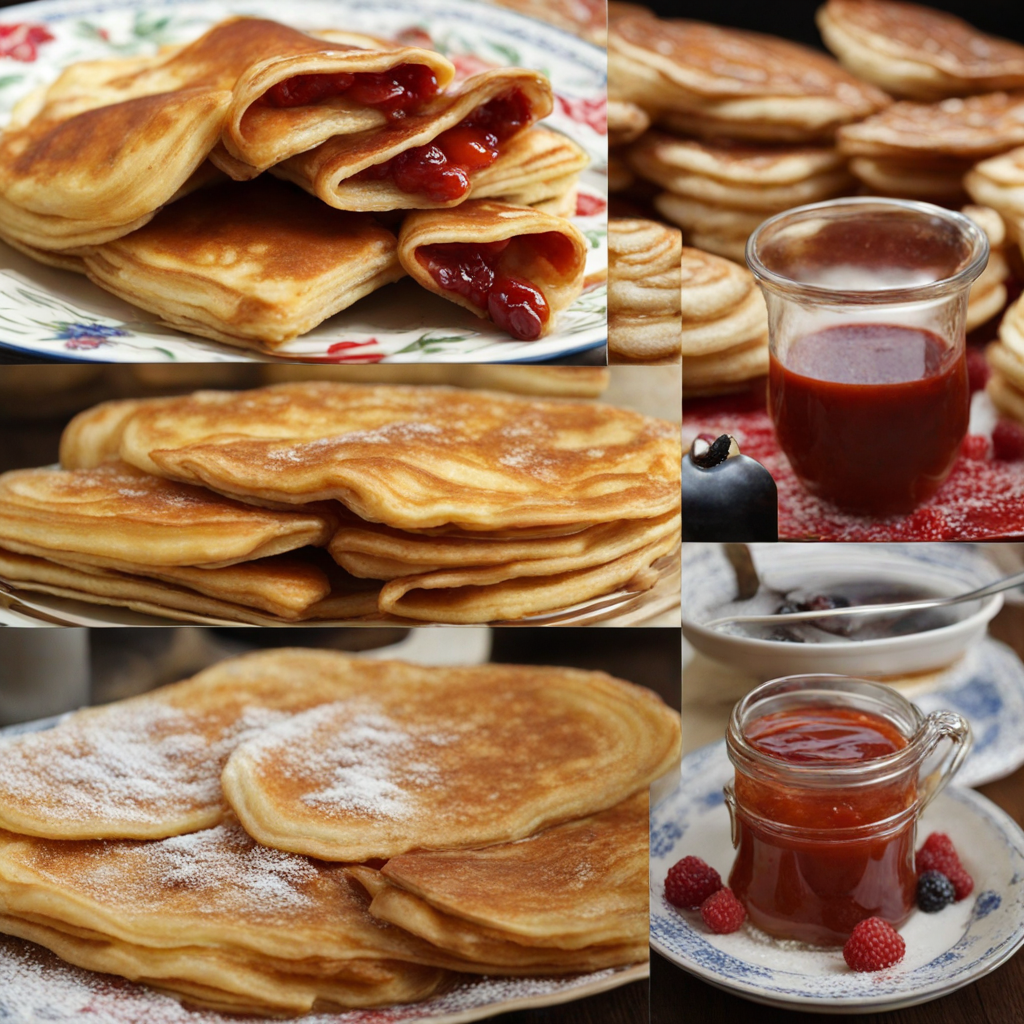Ruske Kape
Ruske Kape, a delightful Serbian treat, is a testament to the nation's rich culinary heritage. These charming confections are known for their unique combination of flavors and textures, featuring a delicate sponge cake base layered with a velvety chocolate cream. The sponge is often infused with a hint of coffee, adding depth to the sweetness of the chocolate, creating a harmonious balance that dances on the palate. Each bite is a journey through layers of rich cocoa and soft cake, making them an irresistible indulgence for chocolate lovers. The preparation of Ruske Kape is a labor of love, often involving a meticulous process that showcases the skill and artistry of Serbian bakers. The cake layers are typically soaked in a flavorful syrup, which enhances their moisture and allows them to absorb the surrounding flavors. The chocolate cream, rich and smooth, is generously spread between the layers, often adorned with a dusting of cocoa powder or chocolate shavings on top. This aesthetic presentation makes Ruske Kape not only a treat for the taste buds but also for the eyes, perfect for special occasions or as a sweet everyday snack. What sets Ruske Kape apart is not just its flavor but the cultural significance it holds in Serbian gatherings and celebrations. These cakes are often served during festive events, symbolizing hospitality and the joy of sharing delicious food with loved ones. Whether enjoyed with a cup of coffee or as a standalone dessert, Ruske Kape invites you to experience the warmth of Serbian tradition through its delightful taste. It’s a must-try for anyone looking to explore new culinary delights that capture the essence of Serbia's vibrant food scene.
How It Became This Dish
The History of Руске капе: A Serbian Culinary Treasure Origins Руске капе, or "Russian Caps," is a delightful Serbian dish that showcases the richness of Balkan culinary traditions. Its origins can be traced back to the 19th century, amidst the complex socio-political landscape of Eastern Europe. The name itself suggests a connection to Russian influences, reflecting the intricate web of cultural exchanges that shaped the region during this time. The term "капa" translates to "cap" in English, which aptly describes the dish's appearance. Руске капе consists of small pastry shells filled with a variety of savory ingredients, often including ground meat, cheese, and spices. The dish is typically baked until golden brown, creating a crispy exterior that encases the flavorful filling. While the exact origins of the recipe remain somewhat obscure, it is believed to have been inspired by Russian culinary practices, particularly those prevalent in the aristocratic circles of the time. The 19th century was a period of great change in Serbia, marked by a growing sense of national identity and a renaissance of cultural expression. Following centuries of Ottoman rule, the Serbian people began to reclaim their heritage, leading to a blossoming of art, literature, and, importantly, gastronomy. Руске капе emerged as a dish that not only satisfied hunger but also symbolized the blending of influences that characterized Serbian culture. Cultural Significance Руске капе is more than just a dish; it is a cultural artifact that embodies the spirit of Serbian hospitality and communal sharing. In Serbia, food plays a central role in social gatherings and celebrations, serving as a medium for connection and tradition. Руске капе is often served at family gatherings, festive occasions, and celebrations, where it is enjoyed alongside other traditional dishes. The dish’s connection to Russian influences highlights the historical ties between Serbia and Russia. During the 19th and early 20th centuries, many Serbs looked to Russia as a Slavic ally, especially in their struggles for independence and national identity. The adoption of Russian culinary elements into Serbian cuisine, as exemplified by Руске капе, reflects a broader trend of cultural solidarity among Slavic nations. Moreover, Руске капе is often associated with family recipes passed down through generations. Each family may have its unique take on the dish, adapting the filling or pastry based on regional ingredients or personal preferences. This practice of passing down recipes reinforces familial bonds and contributes to the preservation of Serbian culinary heritage. Development Over Time As Serbia entered the 20th century, the culinary landscape continued to evolve, influenced by both internal and external factors. The Balkan Wars, World War I, and World War II had profound impacts on the region, leading to shifts in demographics, agricultural practices, and food availability. Despite these challenges, Руске капе remained a beloved dish, adapting to changing circumstances while retaining its core essence. During the socialist era in the mid-20th century, as Yugoslavia was formed, there was a renewed interest in national cuisines. This period saw an emphasis on regional dishes and the promotion of traditional foods as a means of fostering a sense of unity among the diverse ethnic groups within the federation. Руске капе became emblematic of this culinary renaissance, often featured in cookbooks and television programs that celebrated Yugoslav gastronomy. In contemporary Serbia, Руске капе has found its place in the modern dining scene. While traditional preparations continue to thrive, innovative chefs have begun to experiment with the dish, incorporating contemporary flavors and techniques. Some variations may include vegetarian or vegan fillings, reflecting the growing interest in plant-based cuisine. This evolution demonstrates the dish's adaptability and relevance, as it continues to resonate with both younger generations and those who cherish the traditional recipes of their ancestors. Moreover, the rise of food culture and the popularity of local markets and artisan producers have contributed to a renewed appreciation for traditional dishes like Руске капе. Many Serbian households now prioritize locally sourced ingredients, leading to a resurgence in the use of high-quality meats, cheeses, and herbs in the preparation of this dish. As a result, Руске капе is not only a nostalgic reminder of Serbia's culinary past but also a reflection of a vibrant and evolving food scene. Culinary Techniques and Variations The preparation of Руске капе involves several culinary techniques that highlight the skill and creativity of the cook. The pastry dough is typically made with simple ingredients such as flour, butter, and water, resulting in a tender yet sturdy shell. The filling can vary widely, with ground meat (often pork or beef), onions, and spices being the most common choices. Some recipes may also incorporate cheese, mushrooms, or even vegetables, offering a range of flavors and textures. In terms of presentation, Руске капе is often shaped into small caps or hats, and can be garnished with herbs or a light dusting of paprika for added visual appeal. The baking process is crucial, as achieving the perfect golden-brown crust requires careful attention to temperature and timing. Each family may have its secret twist on Руске капе, leading to a delightful diversity of flavors across the country. In some regions, the dish may be served as an appetizer, while in others, it may take center stage at a festive meal. Additionally, the dish has found its way into Serbian restaurants, where chefs honor traditional recipes while also pushing the boundaries of innovation. Conclusion Руске капе stands as a testament to the resilience and adaptability of Serbian culinary traditions. Its rich history, cultural significance, and evolution over time reflect the broader narrative of Serbia's journey towards national identity and cultural pride. From its 19th-century origins to its place in contemporary gastronomy, Руске капе embodies the spirit of togetherness and celebration that is at the heart of Serbian culture. As Serbia continues to navigate the complexities of modern life, Руске капе serves as a delicious reminder of the past, a bridge connecting generations through the shared experience of food. Whether enjoyed at a family gathering or a festive celebration, this beloved dish encapsulates the flavors, stories, and traditions that make Serbian cuisine a vibrant and integral part of the country’s cultural heritage.
You may like
Discover local flavors from Serbia



